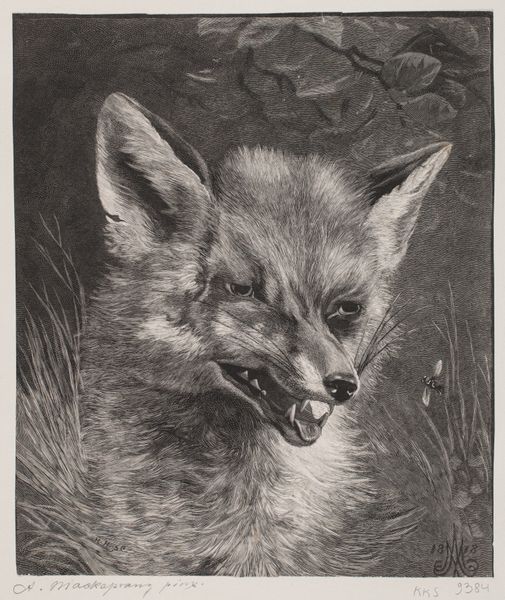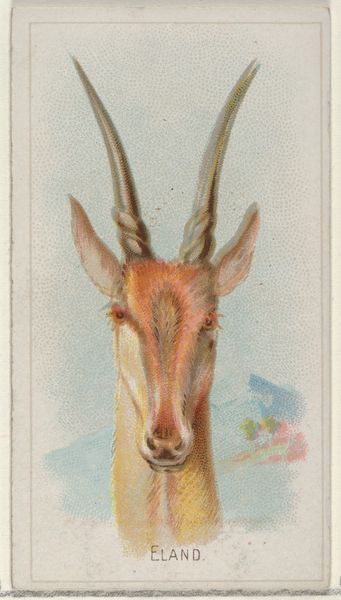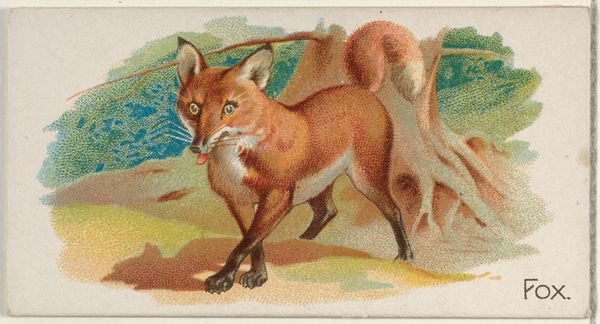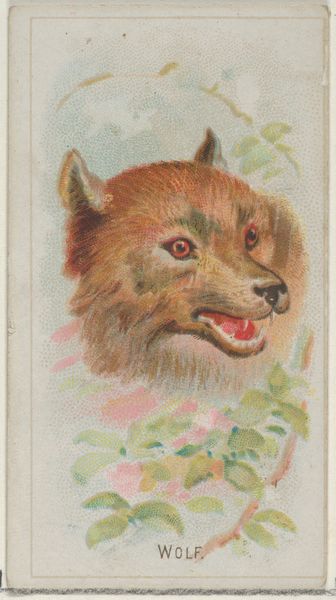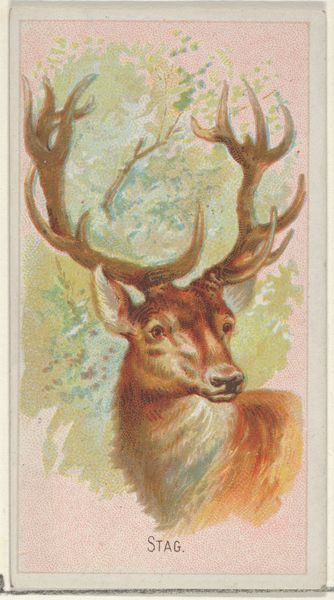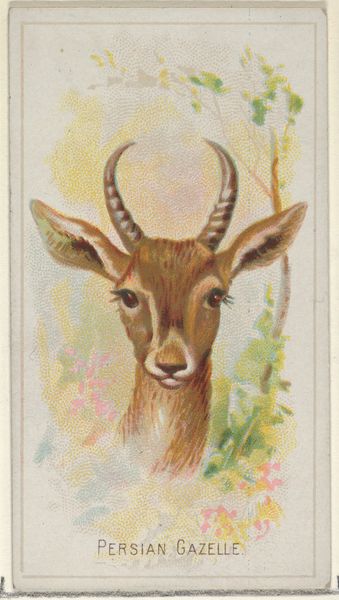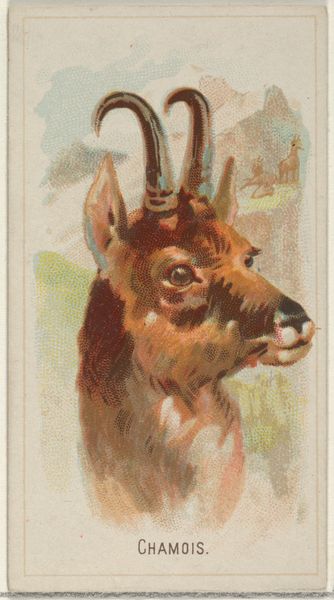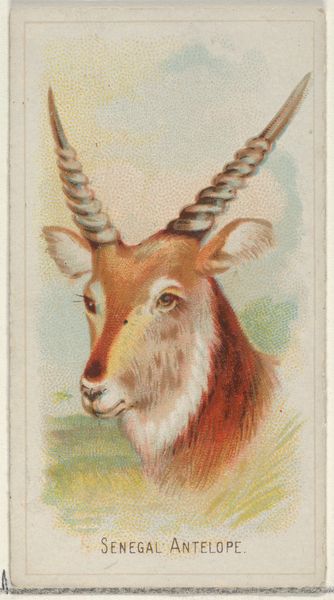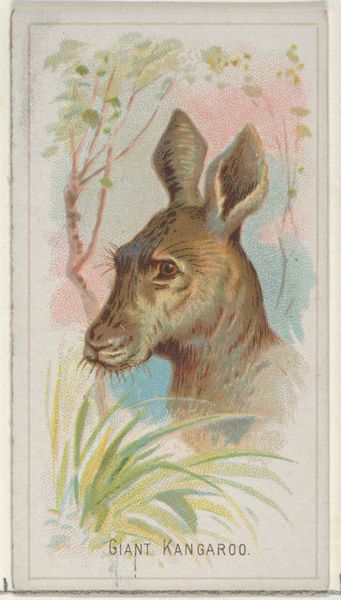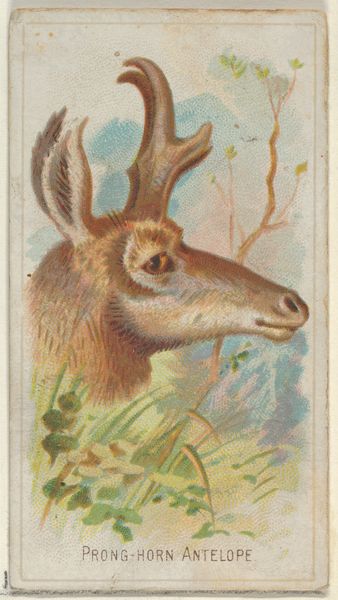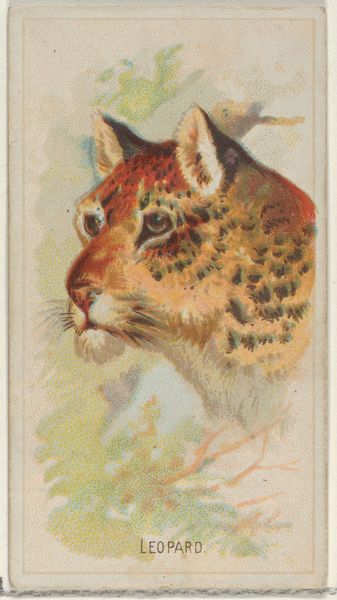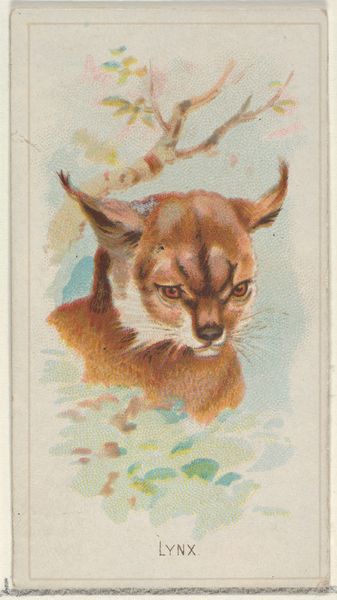
Red Fox, from the Wild Animals of the World series (N25) for Allen & Ginter Cigarettes 1888
0:00
0:00
# print
#
animal portrait
#
watercolour illustration
Dimensions: Sheet: 2 3/4 x 1 1/2 in. (7 x 3.8 cm)
Copyright: Public Domain
Editor: Here we have "Red Fox," a print made with watercolor, dating to 1888, as part of the Wild Animals of the World series by Allen & Ginter Cigarettes. The fox’s gaze is intense, almost human. What can we unpack in this piece? Curator: This small card is part of a much larger historical narrative about the human-animal relationship, wouldn’t you agree? And this series sits within the cultural moment of rapidly expanding industrial capitalism, which, through both ecological devastation and sentimental fantasy, reframed how many people experienced the "natural" world. What does the specific style here suggest to you? Editor: Well, there's definitely a touch of Japanese art in how the fox is centered. And there's a naturalism present, so it feels very studied. It’s like a specimen but with some character too. Curator: Precisely. So, how might this naturalistic depiction serve the purposes of the Allen & Ginter company? Who was the consumer for this card and this product, and what sort of message was the company hoping to convey? Editor: I imagine, a predominantly male consumer, who felt rugged smoking, with this feeling that they had a connection to the natural world and perhaps a position in society, being refined yet close to nature? Almost like they're “taming” nature by consuming this card or the product, but with this veneer of appreciating nature too. Curator: Right. It positions them as knowledgeable consumers, worldly even, able to identify and appreciate exotic wildlife. That card and that gaze almost makes the fox an exotic ‘other’. Editor: I never would've thought a cigarette card could have so much going on beneath the surface! It’s like, consuming the wildness without truly experiencing or respecting it. Curator: Exactly! Thinking about the power dynamics embedded within visual culture always reveals these complicated layers of meaning. There’s a complex colonial legacy behind that gaze and that naturalism, don’t you think?
Comments
No comments
Be the first to comment and join the conversation on the ultimate creative platform.
